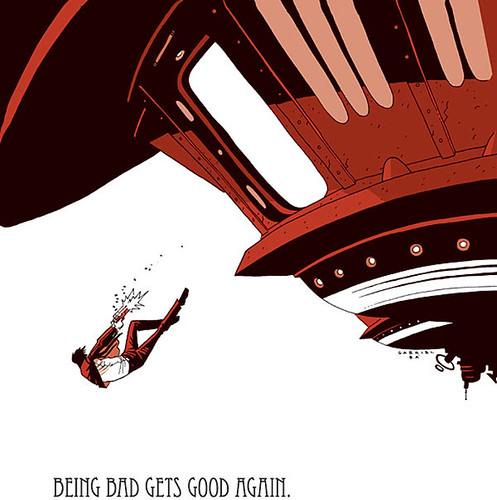Turin'd - Kevin Kelly @ The Technium
I do believe that Kelly has a great point here about the advantages technology can bring to any field, science, or profession. Working as a jeweler (and working with a jeweler with 70s years of experience) I've seen some of the old ways jewelers would heat metals, use drills and polish. Now we have fancy bi-channel torches and flex shafts that can spin burs, drills and other small wheels two incredible rpms while maintaining a great amount of torque. Polishing lathes and ultrasonic cleaners are there as well. So far, the only way technology has failed the jewelry industry is in the setting of stones. Albeit we have gotten to a point where a CAD design machine can cut a wax mold better than the finest jeweler and casting techniques have advanced to the point where you can set stones in the wax before casting.
It's that last part though that has failed in many ways. While the purity of the cast and the metal is true, the use of computerized casting machines has led to the rise of the micro-pavé setting. A pavé setting is one where the stone is essentially embedded in the metal with typically only two or three small beads acting as prongs. My grandfather, when he bought his second house, would work nights paving stones into watch bands for 5 cents a stone (which was undercutting the competition in New York at the time). It's a difficult technique and one I have yet to master. Computer-aided design and casting can make pavé settings but either through cost-cutting measures or the limitations of the machine we have pavé sets that leave too little metal in the beads meant to hold the stones in place. So, working in a repair shop, we regularly see customers with shiny new micro-pavé rings where a stone or two has fallen out. Of course we can reset the stones but usually we also have to rebuild many parts of the setting to ensure that more stones won't fall out in the future.
Now the micro-pavé problem is an extreme example of where technology itself has failed to produce good results. Most jewelers are not opposed to new technologies that can make their work easier, but for those bench jewelers that have to repair, resize or rework jeweler, technology has its limits. So far I haven't seen a machine that can retip a prong, size a ring to a non-standard size or any size at all for that matter, reshank, reset or modify existing settings. While technology has enabled the jeweler to do all of these things quickly and with greater ease, it has not replaced the jeweler.
I think this is part of a larger point Kelly was trying to make. There's a fear in almost any field that the computer will replace the worker. That has happened before, but for some fields technology can only enhance what the worker does but cannot replace.
Until the development of genuine AI, there's little chance of technology replacing the people of those fields that require the use of creativity and learned understanding of the field. When a computer can correctly identify a ring's metal, it's stones, and what needs repairing then the jeweler might become obsolete. But until then jewelers will still hang around. We don't mind technology making our jobs easier. We do mind when technology makes our jobs harder and that's the key point Kelly should remind his audience of.
Monday, March 24, 2008
Technology and the Jeweler
at
7:30 AM
![]()
Labels: AI, future tech, technology
Subscribe to:
Post Comments (Atom)



No comments:
Post a Comment